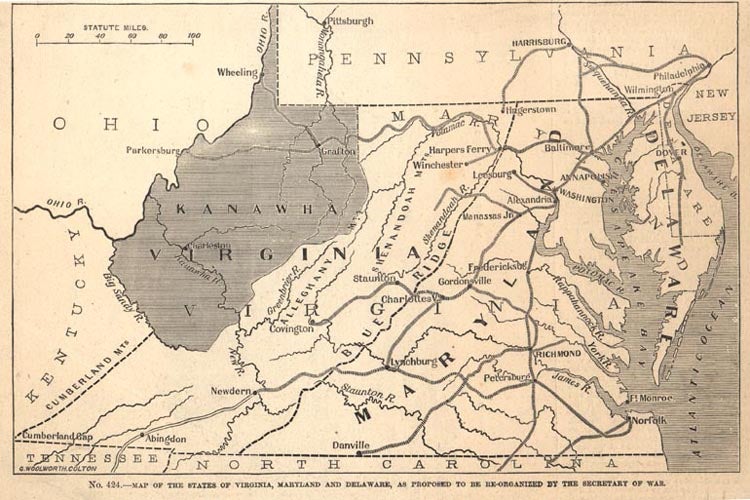The secession of the slave states wasn’t the only case of secession in 1860s America. The western portion of Virginia seceded from the Confederate state and named itself West Virginia, the Mountain State, forsaking the rebellion of the Confederacy for membership in the Union.
West Virginia became the 35th state admitted to the Union on June 20th, 1863, just weeks before the Battle of Gettysburg. It would play an important role in the Civil War as a border state. An estimated 32,000 West Virginians fought for the Union, with between 12,000 to 15,000 signing up for the Confederacy according to some historians.
But how, in the midst of the war, did this even happen? David R. Zimring is succinct: “secession did not always mean treason.” According to the Constitution, a nascent state needs the consent of both the state it is leaving and the federal government. Maine’s separation from Massachusetts in 1820 was one of the very few precedents, and Maine, originally a District of Massachusetts, had not been physically attached to the rest of Massachusetts.
Western Virginia’s differences with the eastern portion of the state were many, starting with the familiar refrain of taxation without representation. The mountainous terrain was populated by yeoman farmers and few slaves. It had a larger white population than the eastern section, but much less power in the legislature in the capital, Richmond. Virginia’s secession from the Union in early 1861 angered westerners: they didn’t want to be dragged into rebellion. In the weeks leading up to and after the convention that voted to take Virginia out of the Union, western Virginians petitioned and demonstrated repeatedly in favor of the Union.

Peter G. Van Winkle, a statehood supporter and later one of the new state’s U.S. Senators, summarized the westerners’ complaints: the east wanted to “govern us by centralized oligarchy.” In 1861, when Virginians statewide voted on the question of secession from the Union, 40,000 of 44,000 voting west Virginians voted against leaving the Union. A so-called “Restored Government” was formed to represent these westerns, and it was given recognition by Washington. Rebellious Richmond, having taken itself out of the constitutional framework of new state formation, wouldn’t have a say in the secession of its western counties.
You might would think the Union was eager to sign up a new state, but Washington would not accept another slave state. Zimring writes that the “crucial battle for statehood took place not in Virginia but in the halls of Congress and the White House.” Statehood supporters told President Lincoln and Congress that slavery in the state would be ended via gradual emancipation (written into the state’s constitution). That’s what finally cleared passage of bills in the U.S. Congress.
Lincoln signed the statehood bill on the last day of 1862. The new state of West Virginia, he wrote, “turns that much slave soil to free,” the very point of the terrible war being waged.







